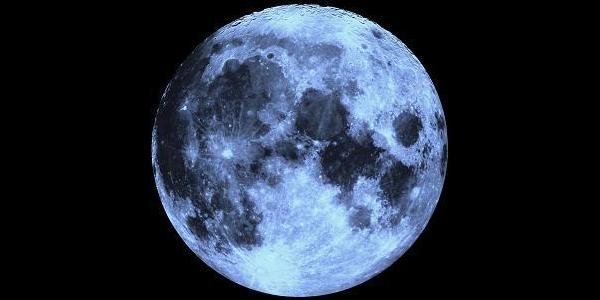Scientists Have Finally Figured Out The Moon's Birthday

The Moon has captivated human beings for probably as long as we've been walking upright. It's our closest neighbor in the galaxy, and it's always present in our night sky. Despite being so close to the moon, the age and origin of the landmark has been heavily disputed on Earth. Recently however, scientists have figured out the moon's birthday and may have unlocked secrets about how it came to exist in the first place.
According to Fox News, scientists have measured the age of the moon to within about 100 million years of the birthday of our solar system. The research was lead by Seth Jacobson, a planetary scientist at The Côte d'Azur observatory in Nice, France. Scientists have always believed that the moon was a product of an impact between Earth and Theia, a Mars-sized stellar object. This impact was suspected to have created about 40% of the Moon, but Jacobson's team has discovered similarities in the Earth and Moon that challenge this theory.
They found that at a basic atomic level, the Earth and Moon are nearly identical. The isotopes, or versions of elements, here and on the Moon are extremely similar. Scientists think that Theia was chemically different than earth, so it would be likely that if this scenario were true the moon and Earth would have vastly different isotopes.
Previous attempts to find the age of the moon have yielded varied results, ranging from 30 million years after the solar system came to be to 50 million years. This time around, Jacobson and his team looked at the way other rocky planets formed, like Mercury, into protoplanetary disks. These disks were made of all the basic building blocks that would form the planets. The team ran over 250 computer simulations to analyze and discover how long it took each planet to form.
But how does this affect the age of the Earth's moon? When the Earth was in its early days, there were certain elements that were more present than they are now. With time these elements accreted, or bonded, with the Earth's mantle. If the impact that created the Moon happened early, the amount of these elements accreted into the earth would be large, but if happened later, the amount would be much smaller. The elements are present in the Earth today, but only in very small amounts. This means that the impact happened much later, allowing researchers to mark the age at 100 million years.
The Moon is no stranger to its own impacts after it formed, as it has thousands of craters caused by nearby asteroids and other space stuff crashing onto its surface. These impacts have even taken place in our own time. There is always a slight chance we on Earth might get hit with another impact, but it's not going to happen any time soon. It's also not very likely that an impact would create a new moon, and if it did, we probably wouldn't be around to see it.
The new findings open up questions about how other rocky planets formed, too. Evidence from meteorites suggests that Mars formed just a couple million years after the solar system came to be, putting it on a very different timeline than Earth. The location, size and other factors scientists are researching could give more clues into the age of all rocky planets in the solar system, and even some clues about the outer gas giant planets. One thing is for sure: The more we learn about space, the more our curiosity grows.
CINEMABLEND NEWSLETTER
Your Daily Blend of Entertainment News
Why Johnny Depp Doesn't Prefer Using The Word 'Comeback' To Describe His Return To Movies
Glen Powell Had To Get Into ‘Bulletproof Shape’ In The Making Of The Running Man, And He Had A Three-Word Code To Click Into Character
While Matt Damon Films The Odyssey, Ben Affleck Reacted To Him Getting In Shape By Both Roasting And Praising Him










